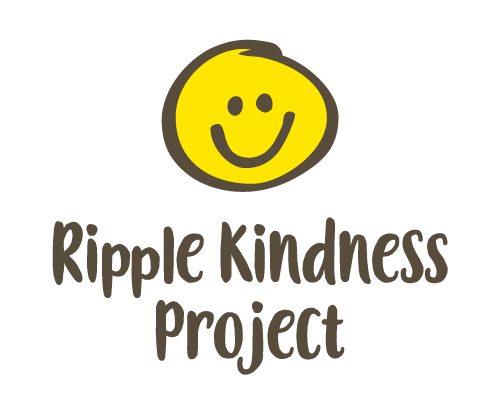Social-Emotional Learning: Classroom Circles Build Community to Help Stop Bullying


Classroom circles nurture an inclusive and supportive school community!
The power of classroom circles or morning meetings to foster emotional intelligence, improve wellbeing and create a culture of kindness is well documented. Circle time is an important tool for nurturing relationships and feelings of community and can have a profound impact on bullying.
Schools with a focus on social-emotional learning (SEL) often use circle time to help build a positive and inclusive school culture which is especially important if there are incidences of bullying. Circles work because they help all children to feel loved and encouraged while creating bonds between peers. They are especially important for nurturing feelings of belonging, acceptance, and stability in troubled children.
More...
Circle time allows you to acknowledge and celebrate, explore, and share ideas, offer encouragement, or address problems. It provides regular opportunities to develop empathy, practice respect for others, encourage mindful listening, and share appreciations and feelings of acceptance or loneliness. Children learn to communicate, discover commonalities, problem solve and adopt positive values and behavior.
Morning meetings can also offer support and healing for children suffering a loss or be effective in addressing difficult or bullying behavior. Circles can be serious or fun depending on the topic but it's important to keep them structured and to the point.
Research indicates that poor emotional intelligence and wellbeing impacts a child's future as a competent and successful community member. With this in mind, it’s worth taking whatever time it takes to create and practice a circle ritual.
Why a Circle?
The use of the circle format to share ideas and reflect on experiences and learning, although not new, should not be under-estimated. A circle facilitates a positive connection which allows all students equal access to facial expressions and body language as others share ideas.
When to Start
Circles can be started with children in pre-school and used right through school. They are most regularly used with junior students who are generally more open-minded but their effectiveness does not diminish with older children.
Older student may view a circle as an organization protocol more suited for younger students. If this is the case and they are reluctant to comply, you could relate the story of King Arthur and the Knights of the Round Table. The circle formation was used by King Arthur as a mechanism to promote equality among his knights and give them equal access to conversations and decision-making. Inviting them to form their chairs in a circle instead of sitting on the floor may also help to overcome any resistance.
Benefits
Participating in any type of circle helps foster emotional intelligence in children by learning:
Guidelines
It's important to set some basic guidelines for facilitating a smooth-running and effective circle:
Types of Circles
Share Circle
Use to reflect on or share after an activity or to brainstorm prior to a project. This type of circle ensures students have a visibility and responsibility to participate in learning activities and contribute to the group experience. Each student is expected to share their thoughts and should be reminded to look at, listen to and not interrupt the speaker. Working around the circle prevents more confident or impulsive students dominating as they must wait their turn.
Discussions should be teacher directed but child focused. Frame questions to encourage students to consider experiences in a specific way to build conceptual understanding of a topic or issue. They will benefit by broadening and building their own perspectives by listening to others and testing their own thoughts with an audience.
Including the option to ‘pass’ allows quiet or unprepared students time to think. A few extra minutes lets them consider other responses before they speak when the class has spoken. It also reduces frustration and anxiety if their thoughts are not fully formed or concerns that they will be overlooked.
Care Circle
Daily care circles give children the opportunity to start a day of learning and socializing having ‘cleared’ anything important they need to share, unload, or celebrate. It also provides teachers and peers with an insight into the child’s personal world and issues. This can help to build empathy and understanding of moods and emotions that may otherwise be displayed inappropriately.
Ideally, allow 5-10 minutes first thing each morning or in conjunction with rollcall. Be prepared to allow more time if an important issue arises. If time is short, a note can be made to revisit anything complex at a more appropriate time.
It’s preferable for children to sit in a circle so that eye contact can be made with every speaker. Explain the reason for this as respect for others, respect for the process and tuning into visual and verbal information. It is not compulsory for students to share and they may elect to pass when it's their turn.
Care circles can also help nurture new and existing friendships as children learn more about their peers so be sure to highlight commonalities. You may also like to point out the positive feelings people share and discuss how they can be achieved by everyone.
Restorative Circle
Use a restorative circle to address minor social issues or anti-social behavior to reach a peaceful solution without the need for punishment.
They can be private to just include the conflicting parties together with the teacher or for whole group discussion to problem solve or offer suggestions. Direct discussions to gain insight into the problem and ensure that all parties understand the underlying issues. The teacher will then ask a question such as "how can this issue be resolved?" to allow children to offer suggestions for a peaceful resolution.
A follow-up circle can be formed again later to check on progress and evaluate the effectiveness of the actions taken. If a positive outcome has not been achieved, use this time to re-evaluate the plan and actions to be taken.
Circles are a positive addition to any classroom regardless of how you use them. Many schools who advocate for social and emotional learning timetable daily circles because of the positive effect the have on both their students and teachers who gain a greater insight into their students.
You may also like...


AUTHOR: Lisa Currie - Ripple Kindness Project
Lisa is passionate about contributing to a happier world by building emotional intelligence in kids through fun and engaging social-emotional learning resources. Her core value is kindness as she believes it to be the “mother” of all character traits. She started Ripple Kindness Project to spread kindness in schools and communities. She is also the founder and director of an outreach program that supports disadvantaged families.




